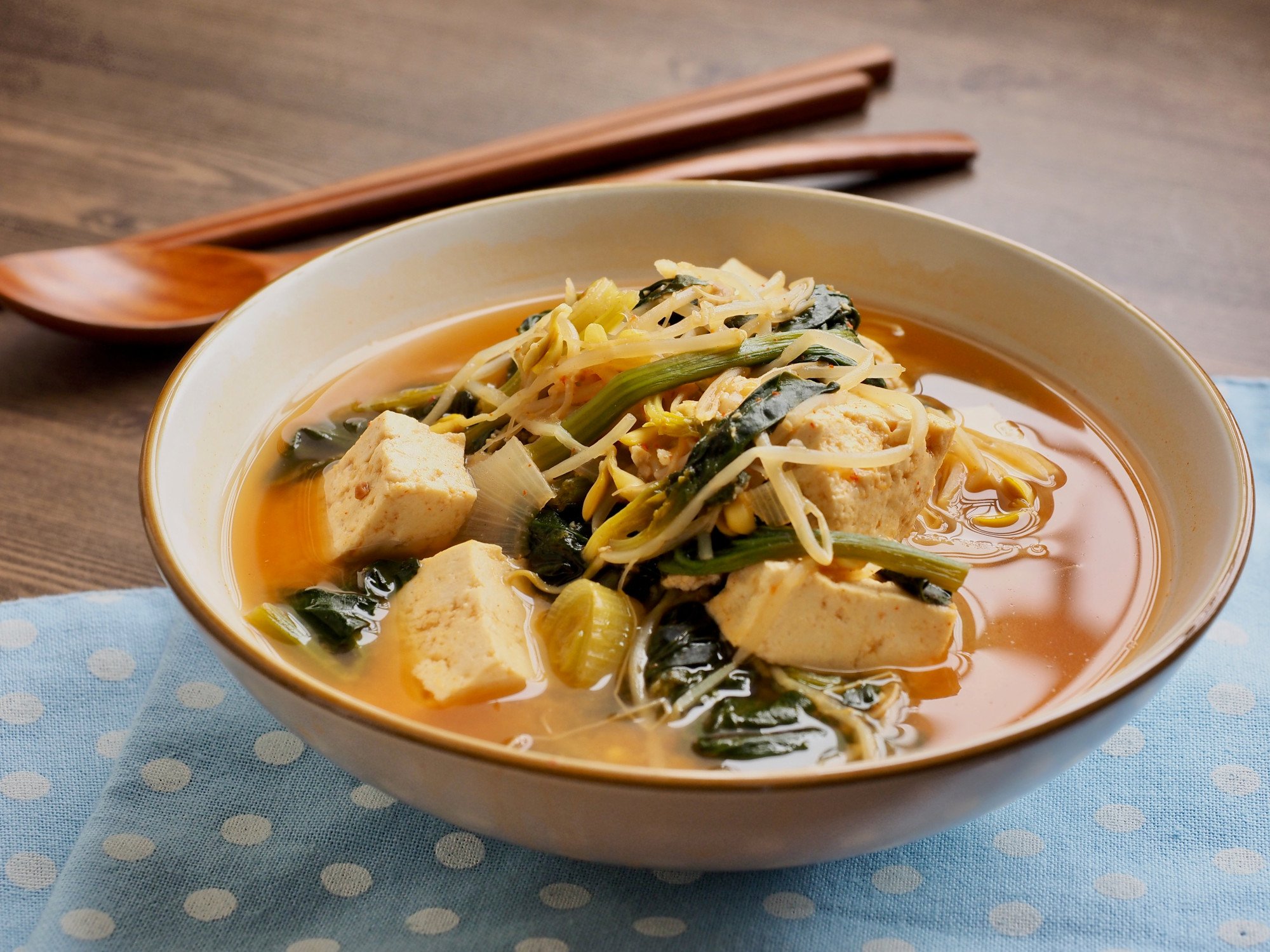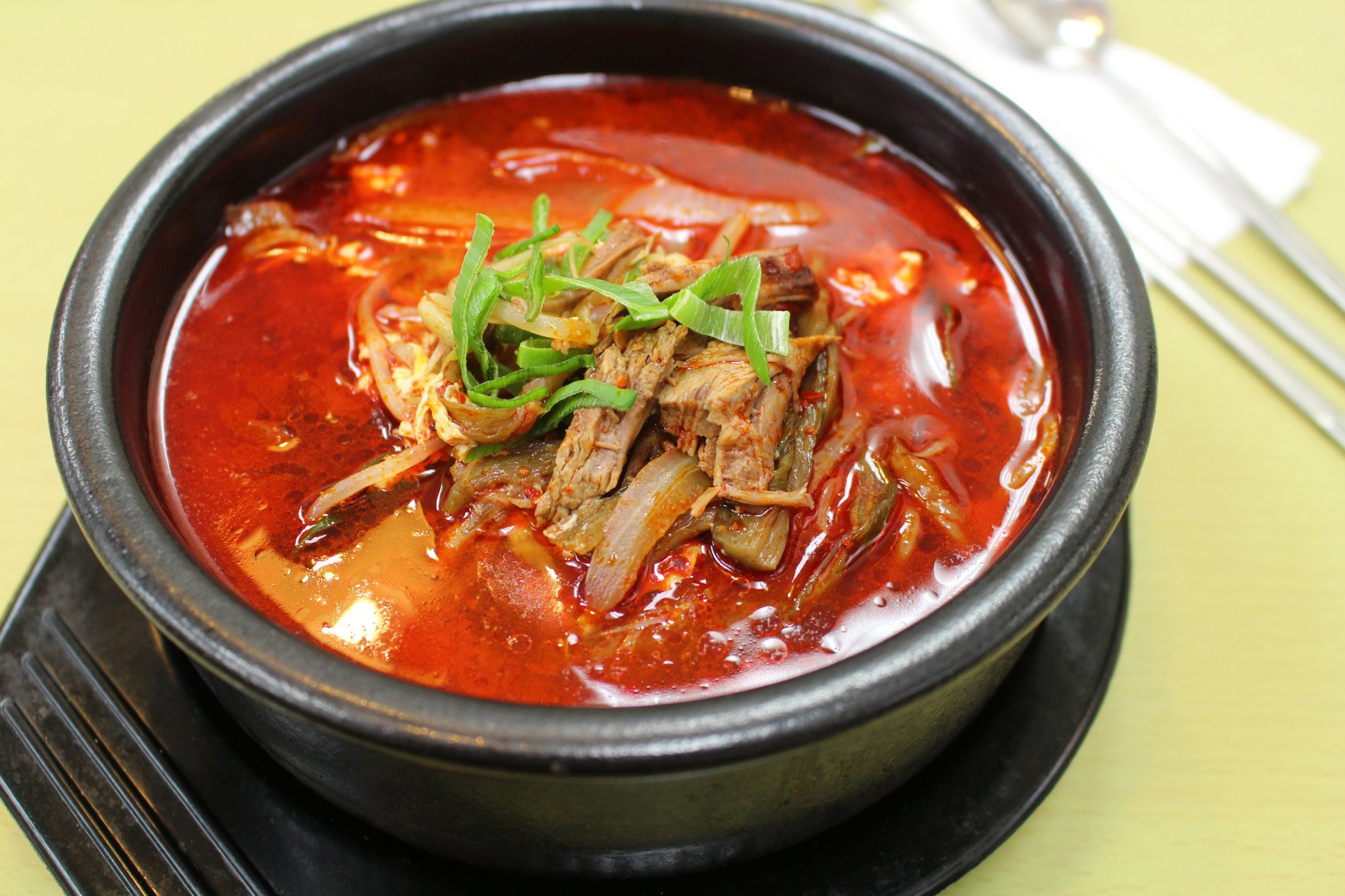
Korean soup, stews and broths: all you need to know about the dishes that represent the very lifeblood of a nation
- The love of soups and broth is fundamental to Korean culture, a fact celebrated in the recent Netflix documentary series A Nation of Broth
- Generally divided into four categories, soups run the gamut from hot to cold, fortifying to healing, beef to seafood, hotpot to served with rice, and much more
For many Koreans, broth is more than just a soothing soup – in its many iterations, it represents the very lifeblood of a nation.
If Koreans are eating a steaming bowl of well-made soup, after the first spoonful, you will undoubtedly hear profound, guttural “aaaaaahs” that fall somewhere between exhalation and exclamation. “Aaaaaah” is the primal chorus around my dinner table, with my Korean husband starting us off, followed by my two-year-old son, who slurps broth straight from his bowl and utters his own startlingly deep “aaaaah”.
The love of soups and broth is fundamental to Korean culture. In Korea, soups mark life milestones and holidays.
When babies are born, new mothers replenish themselves with nourishing miyeokguk, or seaweed soup, which is also taken to celebrate birthdays. Wedding feasts traditionally feature galbitang, or beef short rib soup, and janchi guksu, a festive noodle soup.

On Lunar New Year, Koreans have dukguk, a brothy soup with oval rice cakes symbolising prosperity. For the Korean Mid-Autumn Festival, Chuseok, we eat toranguk, taro root soup.
A Korean table, whether for holidays or every day, is incomplete without a soup or stew. A well-known adage in Korea has it that “a table without soup is like a face without eyes”.
The Chinese-Americans who cook, and bond, with their fathers on YouTube
This passion for soups is explored in the recent Netflix documentary series aptly titled A Nation of Broth. The show features cartoonist and bon vivant Huh Young-man, beloved in Korea and the illustrator of Sikgaek, a comic book series on Korean cuisine.
Similar to his previous television shows, in which he travels through Korea with guest celebrities sampling regional dishes, Huh is accompanied on his broth journey by actors Ryu Soo-young and Ham Yeon-ji.
Ryu has participated in Korean celebrity cooking competitions and is a well-known gourmet. Ham is the eldest daughter of the chairman of Ottogi, the food manufacturer in Korea known for its instant ramen and charitable giving.
The trio serve as enthusiastic guides for three soup-filled hours.

The wealth of Korean soups is infinite, with variations for every region, city and household, and this series could have easily run to 30 hours.
At a macro level, Korean soups can be generally divided into four categories: guk, tang, jjigae and jeongol. Guk refers to brothy soups, where the liquid outweighs the soup’s other ingredients, like miyeokguk and dukguk. Usually, guk is served as individual portions.
Tang derives from the Chinese character 湯 and often refers to soups where the broth is simmered for hours, such as galbitang, gomtang (beef bone soup), or gori gomtang (oxtail soup). Tang also was perceived historically as a more formal and elegant word, so urban legend has it that the names of some stews such as gamjatang (pork and potato stew with perilla powder) were changed from guk to tang to seem more elevated.

Jjigae is the common term for the essential Korean staples kimchi jjigae and doenjang jjigae. To many Koreans, these stews are comforting soul food that recall, like Proust’s madeleines, memories of home.
My family, where both sides are from the southern, coastal province of Jeolla, uses dried anchovies to season our kimchi jjigae, whereas in Seoul, the dish is made with only pork for the broth.
Doenjang jjigae has similar variations and you can encounter twists on the classic at a restaurant in Seoul that tops the stew with thinly sliced beef brisket. Another popular stew is soondubu jjigae, a spicy, roiling stew made with silken tofu.
We love to have scorching soup on blazing hot days – that is how much Koreans adore their favourite food!
Jeongol refers to the Korean version of hotpot, where vegetables and other raw ingredients are presented in a communal pot, broth is poured over and everything is cooked together.
This is distinct from hotpot in places such as Hong Kong, where ingredients are dipped into a boiling broth to cook separately. Jeongol is a cousin to sinseollo, an elaborate hotpot ceremoniously cooked in a brass pot in the kitchens of Korea’s royal courts.
Beyond these four designations, there are many different ways to think about Korean soups. There are the seafood-based broths and soups that my family loves such as al jjigae, a stew made with seasoned pollack roe; bugeoguk, a spare but soothing soup made with dried pollack and bean sprouts; and maeuntang, a fish casserole topped with a mountain of fresh chrysanthemum greens and spring onions that cook down into the spicy, red broth.

On Jeju, they have specialities such as galchiguk, a soup made with hairtail fish, sometimes called beltfish or cutlassfish, which is emblematic of the island. Other highlights include okdom muguk, a simple soup of Jeju red tile fish and radish, and momguk, a hearty and comforting soup made with chopped pork and gulfweed, an edible brown seaweed.
There are the soups recognised for their healing properties such as samgyetang, with a whole chicken stuffed with ginseng, jujubes, pine nuts, chestnuts, other medicinal herbs and rice, that is boiled into a soup to be consumed to combat the summer heat.
We love to have scorching soup on blazing hot days – that is how much Koreans adore their favourite food! (We do also have a variety of cold soups, naengguk, sometimes made with cucumber or seaweed, which are refreshing and cooling.)
Iron Chef is back bigger and better in tasty reboot on Netflix
Another soup popular in the summer is yukgaejang, spicy and rich with beef. In Jeju, yukgaejang is made with Jeju pork and bracken (gosari) and then thickened with buckwheat flour.
In Daegu, considered the birthplace of yukgaejang, one restaurant serves its 59-year-old version with thick slices of beef rather than the more common shredded beef. It also adds delicate, golden noodles tinted with yellow dye from gardenia seeds. Yukgaejang is said to replenish energy, especially on a hot day or after a night of drinking.
On the topic of drinking, Korea has a multitude of fortifying soups, haejangguk, for those struggling with hangovers. Traditional haejangguk heals through the power of blood, either chunks of cooked ox blood in seonji haejangguk or blood sausage in sundaeguk.
Hong Kong chef mixes Thai and Sichuan spices at Sawadee Chef
Why do Koreans turn to soup so naturally? Some believe this is because Korean history has been marked by colonisation, war and poverty. When meat or other prized ingredients are unavailable, a resourceful cook can still create a nourishing soup using ingredients that are. Hence we have budae jjigae, an iconic hearty stew made with canned ham, hot dogs and baked beans that American troops brought to the country during the Korean war.
With simple ingredients, one can create a giant pot of soup that can be shared among many diners. In the first episode of A Nation of Broth, a Jeju cook details how one pig would feed an entire village for days.
A soup made from the leftover pieces of pork would be eaten together, and this sharing of food strengthened their sense of community. Soup, perhaps, can be seen then as a great unifier.
Buddhist nuns Jeong Kwan, Wookwan named Masters of Korean temple food
Then there is gukbap, a humble dish of soup with rice. For busy market workers or delivery drivers, a one-bowl meal of gukbap was practical, affordable and filling. Now gukbap is popular across demographics.
Several years ago, I went to the famed Waeng I restaurant, in Bookstore Alley, near Jeonju’s Nambu Market, a district chock-a-block with restaurants serving kongnamul gukbap, bean sprout soup with rice, topped with chopped squid. My bowl of gukbap was so unpretentious and simple.
I looked around the restaurant and there were white-collar and blue-collar workers, families, students and tourists. We were all enjoying our gukbap and, of course, there were satisfied “aaaahs” heard from every table.

